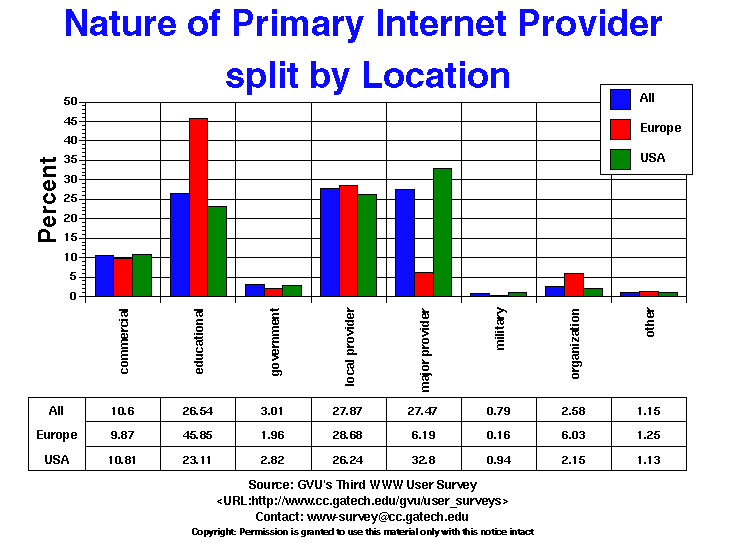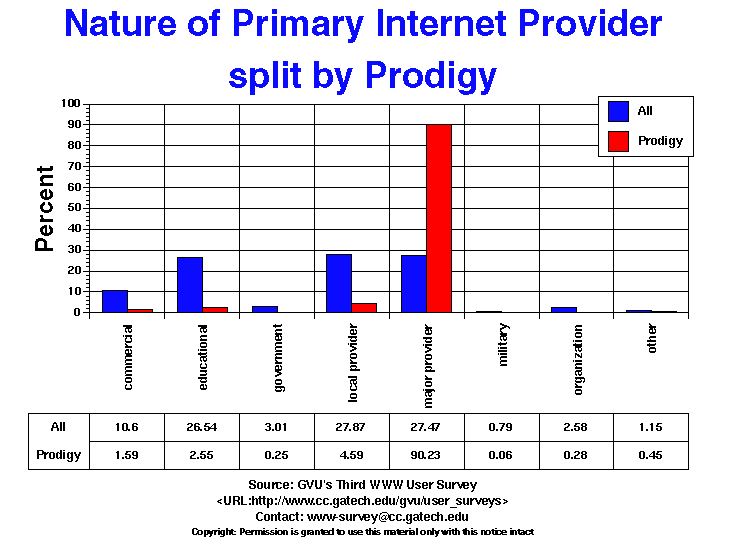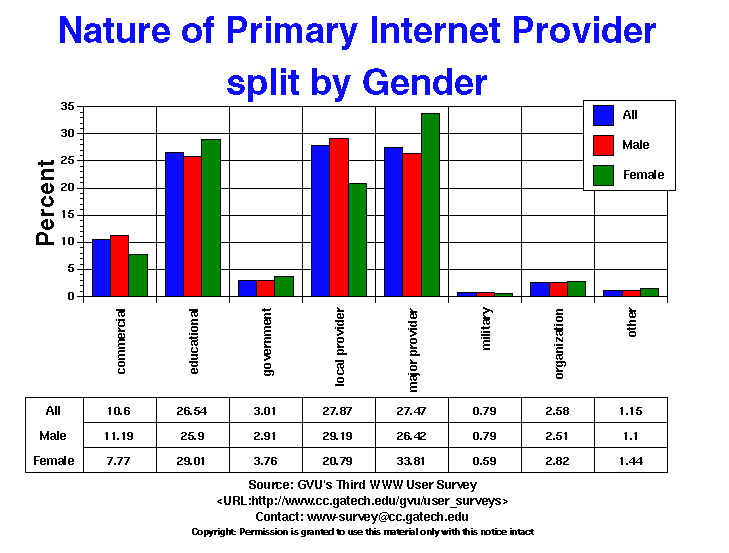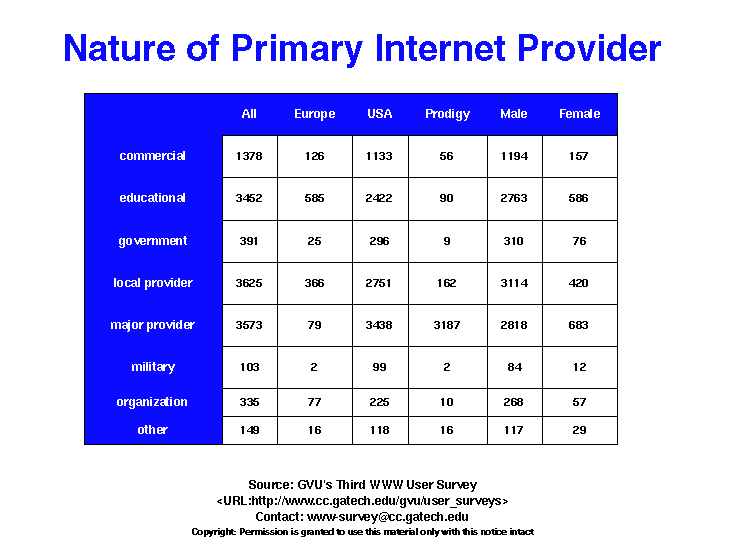
Nature of Internet Provider
Notes:
- This question attempts to try to determine the primary provider of Internet
access to the respondents. The question was redesigned to include two new entries:
local and major online providers. Major online providers are Prodigy,
Compuserve, etc., whereas local providers usually only provide connectivity to a
regional area. "Commercial" refers to gaining access through primarily through work
rather than one of the other sources.
- The three main areas of primary Internet providers are: local online providers
(27.9%), major online providers (27.5%), & educational providers (26.5%).
- Compared to the 2nd survey (See:
Graphs),
more users are gaining access through non-educational domains. The proportion of
users gaining access from educational sources is down 24% to 25.% across all users.
- European users predominantly gain access via educational access points (45.6%) and least gain access
via major online providers (6.2%), government (2.0%) and military (0.2%).
By Location

Notes:
- For the Prodigy sample, we see that even though users filled out the survey
via Prodigy, 9.8% gain primary access from other sources. This suggests that
Prodigy users are "early adopters/seekers" of Web technologies in that access
to the Web is not readily provided via work or school, but must be sought out
via other means.. The Occupation profiles of Prodigy (See:
Occupation Graphs) users supports this
hypothesis, as most are employed outside of educational (this category
includes students) and computer related fields.
By Prodigy

Notes:
- Women are more likely to gain access via major online providers (33.8%) and
educational sources (29.0%) and less likely to use local (20.8%) and commercial
(7.8%) providers.
By Gender

Table of Data for All Categories

For more information or to submit comments:
send e-mail to www-survey@cc.gatech.edu.
GVU's WWW Surveying Team
Graphics, Visualization, & Usability Center
College of Computing
Georgia Institute of Technology
Atlanta, GA 30332-0280

